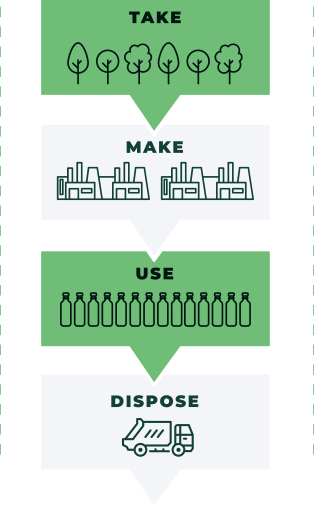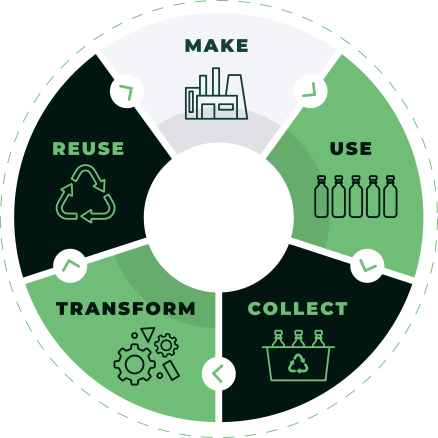Circular Sustainability
Verdi wants to help you get the products you want in a way that you want, with reduced environmental impacts.

What is the Circular Economy?
Let’s begin by defining our current state, a linear economy. Today, companies remove finite materials from the Earth, create products from them, sell them to us, and we ultimately discard them, with the vast majority ending up in landfills. The whole system is premised on single-use value. Not only does this model result in significant environmental and social impacts, it also makes it harder and more expensive for consumers to be able to get the products they want in a way that they want--a way that contributes to sustainability.
The linear economy made sense with the rapid acceleration of industrialization and globalization…but it’s 2023 now and we know so much more than we did in 1922…
Enter the circular economy. A circular economy breaks from the linear economy with the intention of optimizing resource efficiency and economic value—resources are finite, but that doesn’t mean the value and enjoyment we derive from them needs to be. In a circular economy, it’s all about resource management instead of waste management. Through refurbishment, reconditioning, recycling, and reselling, used products become new products— reducing the negative environmental impacts of our traditionally linear economy with the positive impact of a circular economy.

Why shifting toward a Circular Economy matters.
Simply put, waste is out of control. American consumers returned more than $816 billion dollars of retail and eCommerce merchandise last year, the vast majority of which ended up going directly to landfills.
Let’s put this into context:
2022 U.S. Returns
If measured like a country’s economy, U.S. returns would be the 22nd largest GDP in the world, just ahead of Switzerland ($807B) and behind Taiwan ($829B)
In 2022
U.S. consumers returned more merchandise than the U.S. Government spent on the Department of Defense budget.

E-Waste is a big part of the problem.
Electronic waste, commonly known as e-waste, is a big part of the problem. Only 17.4% of e-waste is known to be collected and recycled properly. The remainder, or 57.4 Mt (million metric tons) in 2021, is discarded and buried away forever, or quite literally gone up in smoke--even the non-defective products which are returned simply because a customer had a change of heart or couldn’t get the hang of the device controls. To make matters worse, e-waste is projected to climb to 64.7 Mt by 2030.

